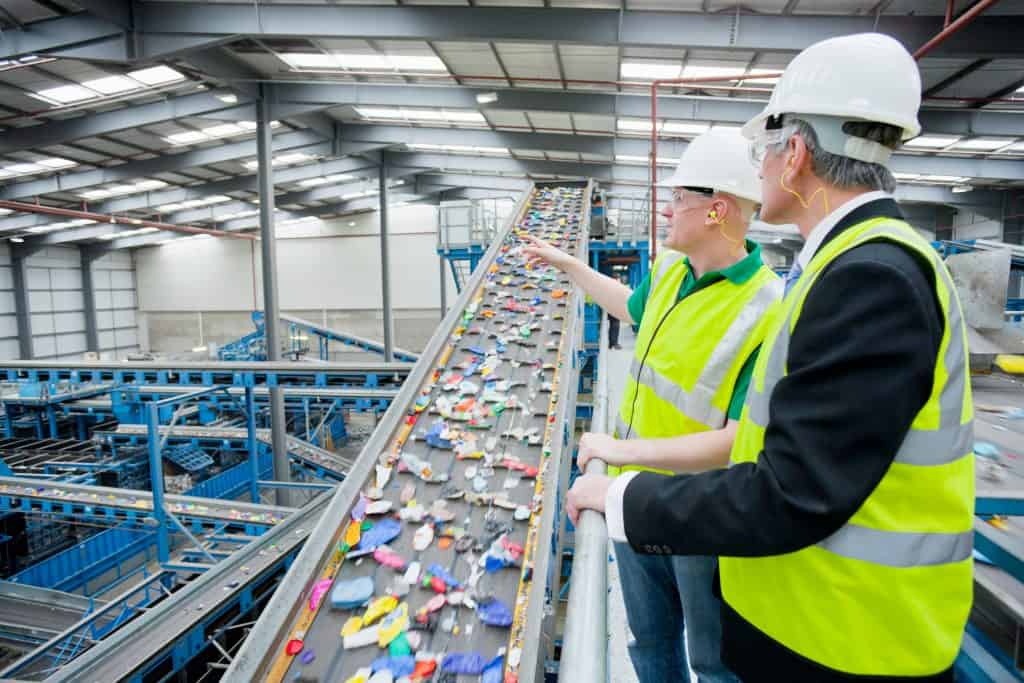Recycling technologies
Efficient recycling of plastics waste supports our industry’s transition to the circular economy while contributing to reducing GHG emissions by keeping discarded waste as a resource within the circular economy.
The collection and sorting processes are the first steps in ensuring that separated items are delivered to recycling plants. Improvements in collection schemes and sorting technologies are essential to achieve higher recycling rates. Plastic waste recycling rates are ten times higher when collected separately, compared to mixed collection schemes. Recycling waste and creating materials that can be reused again is a key sustainability benefit. It reduces the need for the resources to make new plastics from raw materials. Recycling also saves the energy needed for and the emissions generated from the refining and manufacturing processes.
How are plastics recycled?
Mechanical recycling is the most common approach used for recycling plastics like polyethylene terephthalate (PET) and high-density polyethylene (HDPE). PET and HDPE are typically used to make soft drinks bottles or containers, and are relatively easy to recycle.

Mechanical recycling refers to the processing of plastics waste into secondary raw material or products without significantly changing the material’s chemical structure. In principle, all types of thermoplastics can be mechanically recycled with little or no impact on quality. Mechanical recycling is the most widespread form of recycling and represents the majority of activity in Europe.
Collection: Collection of end-of-life plastic products from separate and mixed waste streams
First sorting: Once plastic waste arrives at the recycling plant, it is sorted. While some sorting may have taken place at the collection stage, further separation by colour or thickness may be necessary.
Shredding: Plastics need to be shredded into smaller pieces before they can go on for reuse.
Washing: Washing removes dust and dirt to ensure plastics are clean before they go onto the next stage. This can include removing traces of food, drink or labels.
Second sorting and control: Plastics are sorted again and controlled before being sent to extrusion.
Extrusion: Plastics flakes are finally converted into homogenous pellets ready to use in the manufacture of new products
Chemical recycling is a growing approach for recycling and offers greater opportunity for scalability. Chemical recycling covers a set of technologies (pyrolysis, gasification, hydro-cracking, depolymerisation) that change the chemical structure of plastic waste. Long hydrocarbon chains constituting plastics are broken into shorter hydrocarbon fractions or monomers using chemical, thermal, or catalytic (chemical/thermal) processes. These shorter molecules are ready to be used as feedstock for new chemical reactions to produce new recycled plastics and other chemicals. It is a complementary technology with significant potential.
Dissolution recycling is a purification process through which the polymer present in a mixed plastics waste is selectively dissolved in a solvent, allowing it to be separated from the waste and recovered in a pure form without changing its chemical nature. Several industrial examples of such technology already exist and apply to different polymers, such as polyvinyl chloride (PVC), polystyrene (PS), nylon (PA) or polypropylene (PP), to separate them from mixed, multi-material waste.
Organic recycling is defined as the controlled microbiological treatment of biodegradable plastics waste under aerobic conditions (composting) or anaerobic conditions (biogasification). It applies to specific polymers that can be converted, under the actions of microorganisms, into stabilised organic residues, carbon dioxide, methane and water.
Boosting sustainability
The transition to a sustainable and circular plastics economy demands focus, collaboration and sizeable, long-term investments in systems and technology that can deliver the transition to a zero-waste future. We are fully committed to addressing the immense challenges of waste management, circularity and ending plastic waste in the environment.
While we are fully aware of the challenges, it is also important to recognise our industry’s contribution to sustainability. This includes helping to reduce food waste through plastic packaging, whilst also reducing carbon emissions from cars through lower weight materials and the energy lost from buildings and the electrification of our energy grid and transport systems. Plastic is an essential material to ensure a sustainable future, and has a vital role to play in helping Europe achieve its Green Deal ambitions.